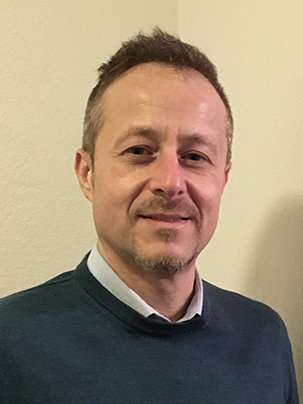
Damiano Casalino
Safety and noise are the key criteria to comply with in the design and deployment of eVTOL vehicles.
Damiano has been with the TA2M group since the very beginning. Together with Fulvio Scarano he defined the scope of the interest group. “I believe that the convergence of several technological factors in relation to materials, battery technology, electric propulsion, flight control, and design & simulation software is an essential prerequisite for the rapid development of an urban/regional air traffic system based on electric vehicles. Together with other colleagues of the aerospace faculty, we decided to create a discussion forum to share our experience and information related to this new growing field.”
His interest in Personal Air Mobility (PAM) and Urban Air Mobility (UAM) in general is broad. “My background is in fluid mechanics and aeroacoustics, with a focus on rotorcraft applications. I’m always intrigued by aeroacoustics and its multiple engineering applications related to human comfort and health. Reducing the noise generated by flying vehicles and wind turbines is extremely challenging, and I love the positive societal implications of this work. Nowadays, I find myself more and more attracted to other disciplines, such as flight mechanics, control and model-based system engineering.”
Aeroacoustics is essential
His huge expertise in aeroacoustics is essential for the TA2M Group: “The development of the UAM field as a new business area relies on the fact that in some big cities in the US many heliports have been closed due to excessive levels of noise pollution. These heliports could be converted to eVTOL vertiports, but it is clear that these new vehicles must be much quieter than conventional helicopters. We can therefore argue that safety and noise are the key criteria to comply with in the design and deployment of eVTOL vehicles.”
Much has already been achieved, such as the thematic DICUAM conference in Delft, which was attended by several stakeholders from academia, research institutions and industry. “Another important responsibility of the TA2M Group is the harmonization of education activities, such as the delivery of online courses, the coordination of multi-disciplinary master thesis projects, and the supervision and review of Design Synthesis Exercises.” Damiano has been involved in all these tasks and is satisfied with the various outcomes. “On the research side, I have been quite active in the field of eVTOL noise, using both low-fidelity methods for rapid design and scale-resolving CFD for detailed design based on the Lattice Boltzmann solver PowerFLOW.”
Strict noise regulations
Air vehicles designed to operate in urban environments will be subjected to very strict noise regulations, as their progressive introduction is expected to be fully sustainable. “The biggest challenge, therefore, is to develop electric vehicles that safely meet the aerodynamic and propulsive efficiency required for the benefit of battery endurance, but also comply with strict noise targets. The challenge is specifically connected with the fact that an efficient design is in general not the quietest one, and that noise ‘unexpectedly’ results from features and details in the design that are necessary to comply with other requirements.”
Damiano’s future plan for TA2M related aeroacoustics research is to close the gap between aerodynamic sound generation at component level, e.g. a propulsion unit like a rotor, and the system engineering vision, which includes flight mechanics and operational aspects. “More specifically, my current interest is in the development of adaptive propulsion systems that can mitigate noise under different flight conditions.”
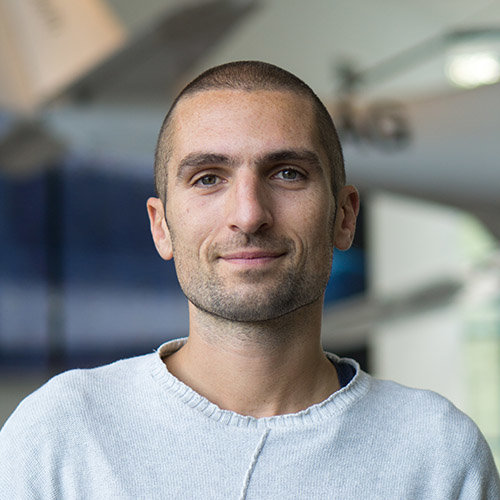
Daniele Ragni
The challenge of TA2M is to move urban air mobility AND sustainability forward together. Because everybody is saying that they are related, but they are not.
Daniele graduated in Thermo-Mechanical Engineering, but moved into aerospace and eventually aerodynamics because he is intrigued by the interaction between objects and fluids. In TA2M, with his experimental aeroacoustics expertise, he focuses on noise reduction technologies for rotor applications. He joined the TA2M Group at the beginning, because of his interest in the application of new noise reduction technologies in Urban Air Mobility (UAM). “I’m very interested in how we can reduce the noise from the rotors, as perceived by the people on the ground.”
Within UAM he also focuses on interactions with the airframe, i.e. the flow between airplane, wing and rotor. “New propulsive configurations are being introduced in the field of UAM. These feature larger or multiple rotors to promote sustainability. But for UAM, this usually comes at the expenses of the interaction with the wing and the airframe.”
New collaborations
In 2020, Daniele set up the first consortium for a UAM cross-over NWO application. “Unfortunately, this did not happen, but the good thing was that it brought everybody together, opening new collaborations with the Faculty of Electrical Engineering, Industrial Design and Architecture. We have joint master theses and projects between propulsion, aeroacoustics and electric engineering, and courses for Bachelor students. TA2M has inspired collaboration between different partners, which was not possible before.”
The challenging part for the TA2M Group is to move urban air mobility AND sustainability forward together. “Because everybody is saying they are related, but they are not.” For Daniele, the challenge lies in the limited size, but heavy weight of UAM vehicles. “We want to shrink something that works for a really big size – an airplane – to the size of a car. The propulsive system, however, is quite large in comparison to the vehicle. Also, the interactions are quite strong. When it comes to aerodynamics, the noise of the propulsive system is going to be quite loud. In addition to that, interaction may create instabilities or problems in the aerodynamics of this vehicle.”
Experimental aeroacoustics
Daniele brings in his expertise on experimental aeroacoustics with cross-over to analytical modeling. “Our scientific approach is that we try to understand a specific noise mechanism by using the well-known scientific method: we make a hypothesis, work with experiments or simulations and then try to learn from that. I am an experimentalist, but I try to do as few experiments as possible. Instead of trying to experiment a lot and learn less, we push to do what is exclusively needed to validate our hypotheses. These are the basics of the scientific method.”
Daniele has been quite active in the group. “We have set up a low-Re propeller study group with an on-going collaboration with the Flight Performance and Propulsion (FPP) group. We, as aeroacoustics group, help them to understand why something makes noise and how we can reduce that noise. In addition, we have created an online course on UAM for professionals, to be continued next year, with contributions from Aircraft Traffic Operations (ATO) and System Analyses.”
Another achievement is the good collaboration with Dutch, European and international companies, including PAL-V international and Lilium. The TA2M group also inspired the Delft International Conference on Urban Air Mobility (DICUAM). The first two editions were a great success and the conference is to be organized every two years.
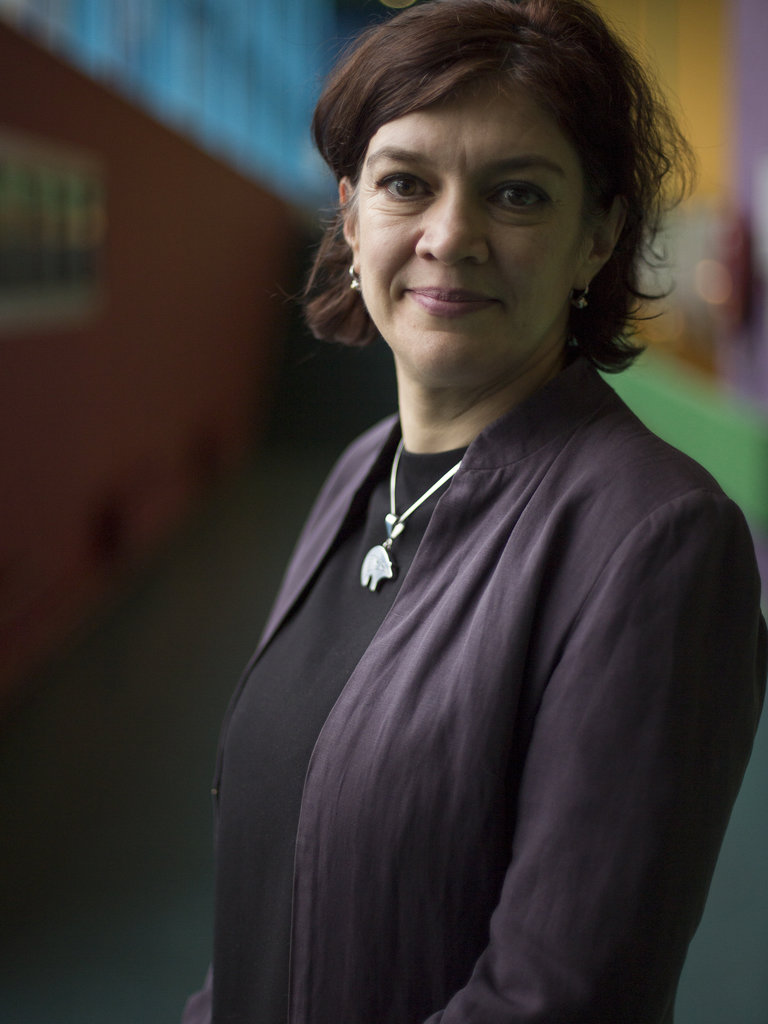
Marilena Pavel
Getting eVTOL aircrafts to fly is only the first step.
With over twenty years of experience in the field of rotorcraft flight dynamics, simulation and handling qualities, Marilena teaches the university’s only graduate level course on helicopter aerodynamics and modelling, and advises students conducting rotorcraft related research. She loves the complex phenomena: “A rotorcraft is a bit more challenging than other machines such as airplanes and helicopters, and the same applies to the simulation. Secondly, unlike airplanes, rotorcrafts can land vertically and save lives in the event of earthquakes and evacuations. This social aspect makes them even more appealing.”
Passionate about VTOL aircrafts
Joining the TA2M group was a natural choice for her, as she has always been passionate about VTOL aircrafts and has been participating in NASA’s Transformative Vertical Flight. “Hundreds of companies are working on electric VTOL concept vehicles, most of which take off vertically and can fly on wings using hybrid or all-electric propulsion. Many challenges arise on how to resolve the complex technological issues, ranging from energy management to safety, social acceptance and the concept of operations in an urban environment. Getting eVTOL aircrafts to fly is only the first step: making these configurations efficient in an urban environment, economically viable, affordable, and safe, requires that we incorporate advanced technology. This is an interesting area of research.”
According to Marilena, TA2M is a devoted group of experts planning the future of urban transportation in the skies. “We like being challenged with difficult questions. Urban Air Mobility (UAM) systems existed already in the mid-20th century in the form of helicopter airliners. However, despite of their initial success, ultimately they were all forced to reduce or terminate services as a result of safety issues and economic challenges. To bring a technically sophisticated new transportation system into existence requires intelligent cooperation between different disciplines.”
Build strong expertise
Marilena loves working in the TA2M Group. “The nicest thing about this group is that we can work together, we set up projects together and set up the online course on UAM together.” She looks forward to make her contribution to the development towards Controlled Resilient and Sustainable Urban Air Mobility. “As far as rotorcrafts are concerned, my plan is to build strong expertise on Personal Air Mobility (PAM) within the Faculty of Aerospace Engineering. Also in relation to education, we will continuously improve the online UAM course, paving the way to a complete understanding of the topics.”
She adds: “We are at the beginning of UAM, so the knowledge needs to be built. It’s like the Wright brothers starting aviation: the challenge is to make it really work. It’s not only a technical challenge, but also when it comes to social acceptance, as well as a huge challenge in relation to safety, because we are now going towards a new configuration regarding rotorcrafts and urban integration: how do we integrate this in the cities? In other words, we are facing a multidisciplinary challenge. Rotors are also multidisciplinary, so it’s something I’m very familiar with.”
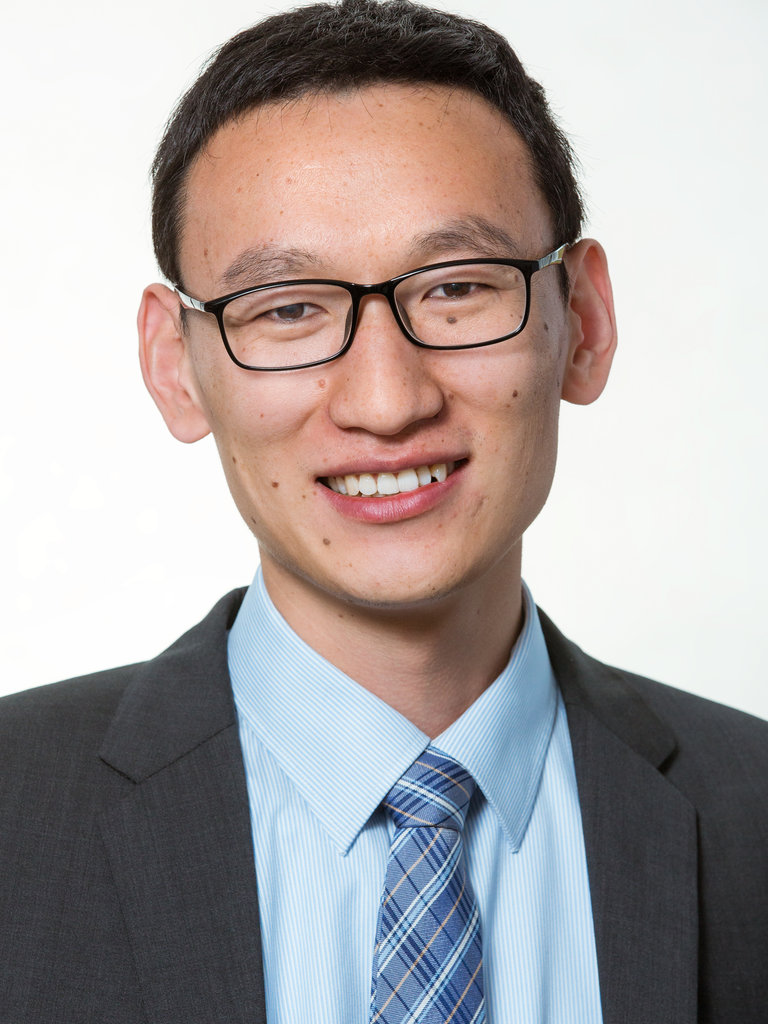
Jianning Dong
TA2M is a challenging joint force of different faculties.
In his daily work, Jianning conducts research into the design and control of electromechanical systems and contactless charging. He has been with the TA2M group since 2019, “because transportation electrification is an inevitable trend and electrical drives will be the work horses to power the innovative UAM vehicles.” For academic purposes, he likes the multidisciplinary approach: “TA2M is not a group within a certain faculty. It is a joint force of different faculties, such as aerospace engineering, aerodynamics, aeroacoustics, propulsion systems and electric engineering.”
Within TA2M, Jianning is particularly interested in the electric powertrain design for the propulsion system, which includes batteries, power converters and electrical machines. In one sentence: Jianning is the guy to link aero related research to electricity. “In addition to that, I make sure that the activities at TA2M are shared with researchers at the Faculty of Electrical Engineering, Mathematics and Computer Science (EEMCS) to stimulate more effective collaboration.”
Excellent results
In the last two years, even with the impact of the pandemic, Jianning managed to carry out many activities under the TA2M framework. “Since I joined the TA2M Group, I constantly receive requests from aerospace engineering students to help them solve problems related to electrical components, such as batteries, power converters and electric motors. Last year I contributed to two short lectures on electric powertrains and electric power storage for the Urban Air Mobility (UAM) online course organized by the TA2M Group.”
In addition, Jianning, together with Daniele Ragni and other colleagues from Aerodynamics and EEMCS, supervised a group of six electrical engineering students. “The team designed an eVTOL aircraft – to carry cargo, not humans, and: no pilot involved, to save weight – for their BSc theses and participated in the AIAA/IEEE EATS Student Design Competition. With an excellent result: they ended in the top three! Furthermore, I am working together with Mihaela Mitici in the PAM group on a project on batteries.”
Biggest TA2M challenges
In relation to application, Jianning’s biggest challenge regarding TA2M is reducing the weight of the electrical system, which is currently still too heavy to drive the big aircraft, let alone with more passengers in the future. “In order to make the electrical system lighter, we conduct research into higher power density batteries and higher power density machines and electronics – which is my expertise.” From an academic point of view, the challenge is to integrate different disciplines in a system and stimulate collaborations between people from different backgrounds.
“Like the tower of Babel, we speak different languages: the aerospace people communicate in the language of aerodynamics, but here at the electrical engineering department, we are talking electrical language. Making a break-through by combining several disciplines is really challenging. We need to think out of the box. We should not be limited by the imagination of our own field. We have to think more creative, in ways we are not used to.”
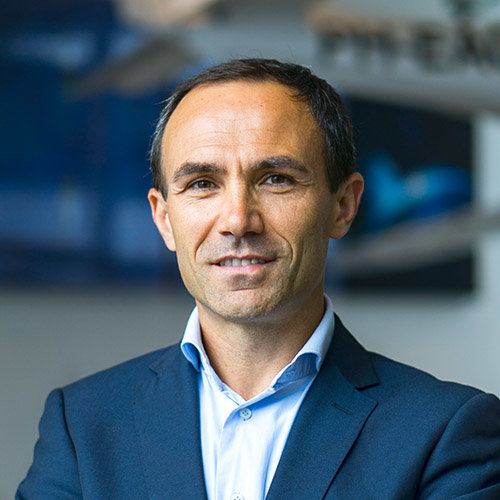
Fulvio Scarano
TA2M is the place to be to become an expert on UAM.
Fulvio is one of the initiators of the TA2M Group. “By chance, over a cup of coffee, my colleague Damiano Casalino and I started discussing Urban Air Mobility (UAM): small electrical vehicles that can, like helicopters, take off and land on a small space, with no need of an airport. We were both passionate about the topic and saw potential in this unexplored area, so we formed a group on UAM.”
The very fact that UAM is a new chapter in aviation, makes it very interesting for Fulvio. “Traditional aviation is now established and configured: aircrafts all look the same, they all need airports and landing strips, and people have to travel to the airport by car, train or plane. With UAM, the idea is that you use the air as a road to move across. Similar to the way we use cars or taxis. In fact, initial services are air taxis and air ambulances.”
Profoundly different
Fulvio has a passion for aerodynamics and physics: he loves to study how air, fluids and water move, in relation to the forces created on wings, or a powerful thrust from an engine. From an aerodynamic point of view, it is interesting that UAM vehicles are profoundly different from regular aircrafts. “They don’t look like aircrafts or helicopters – at most a bit like drones – with tilting rotors or tilting wings and in some cases many small jets. So in terms of aerodynamics, we have to study, understand, design and optimize a completely new type of technology.”
His UAM related expertise lies in the aerodynamics of electric vertical takeoff and landing vehicles. These eVTOL vehicles have many benefits compared to ‘normal’ aviation: they have no gas emissions and a minimum of noise emissions. “Ideally, all that will be studied within TA2M, and eVTOL vehicles will stimulate sustainable aviation, which is the mission of our faculty.”
Still growing and going strong
The group is still growing and going strong. A lot has been achieved: for example, Fulvio participated in a multimillion proposal on defining a demonstration flying corridor over the campus of TU Delft. Also, initiated by Fulvio and Damiano, the first international conference on UAM (DICUAM 2021) took place in Delft. Fulvio gave some introductory lectures. In addition, the TA2M Group connected to the industry working on UAM, with partners such as PAL-V and Lilium. “In this way, we have created a stable interest group with a clear definition of objectives and a clear mission.”
The group plans to expand its activities from Bachelor and Master projects to PhD research. “We need to find the resources and funds in order to engage PhDs in e-VTOL vehicles. For some of our PhDs we are already proposing relevant topics. And we continue to write research projects on this domain.” Also, Fulvio strives to organize visits to major (European) industrial stakeholders such as Pal-V, Volocopter and Lilium, to establish a frequent exchange of students and collaboration on projects.
The place to be
Fulvio hopes that DICUAM will be held in Delft every two years. “We want to become a place where industry and scientists regularly come together to make an inventory of current developments. “I am confident that in a few years’ time, we can play the spider in the web and be recognized as the place to be to become an expert on UAM – with respect to vehicles, architecture/civil engineering and flight control. After all, UAM also requires towers that look like flowers where these mega insects can land, as well traffic management in the air.”